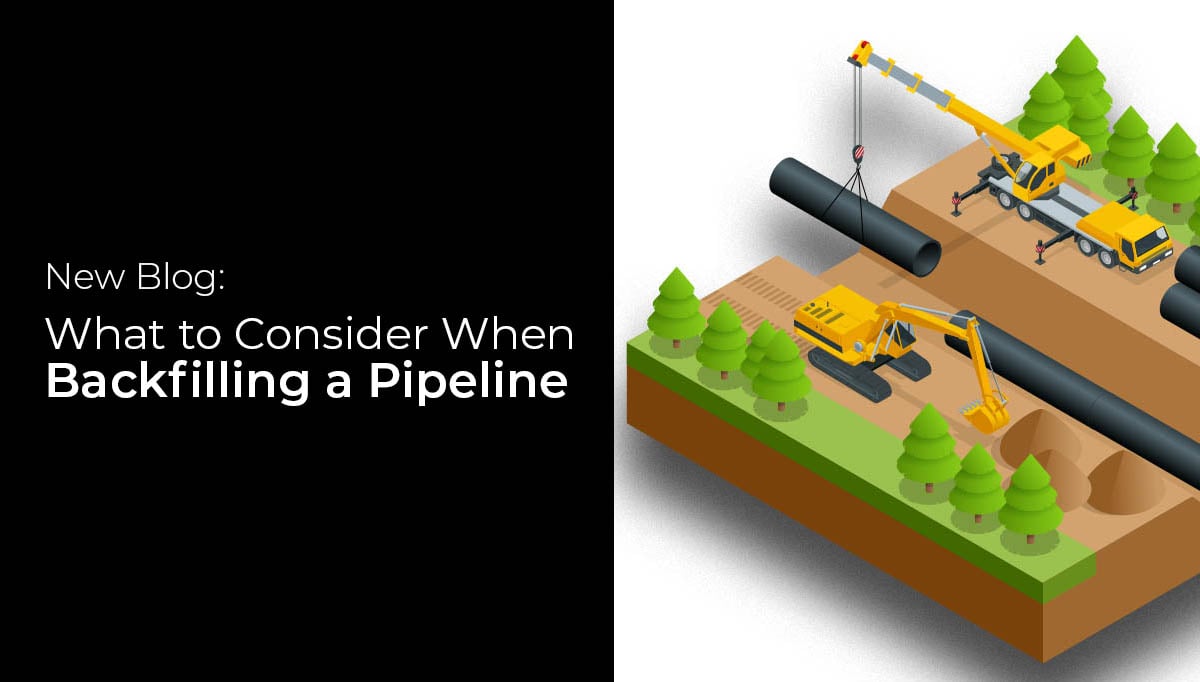Working in the vicinity of pipes or directly on pipelines can be dangerous. For the safety of all...
What to Consider When Backfilling a Natural Gas Pipeline

Proper backfilling is critical when burying natural gas pipelines. First, however, is the preparation of the pipe. Once it’s coated and the segments are welded together, the pipeline is lowered into the trench, and a cathodic protection system is applied.
The utilization of an outer wrap provides mechanical protection from larger aggregates and soil stresses. Soil stresses include anything that moves the earth, like passing cars on a nearby road. The deeper the pipeline is buried, the more protected it will be from any potential damage caused by these stressors.
Apply an outer wrap like Rock Shield to the pipeline before backfilling. From this point on, the backfilling process can begin.
The Backfilling Process Explained
Backfilling typically includes the following steps:
- Placing sandbag benches within the trench to support the pipeline. These are placed at a rate of roughly 15,000 sandbags per mile! These level and stabilize the ditch for pipeline installation.
- Using padders to excavate and crush aggregate to form a sand pad underneath the pipe.
- Stamping backfills for compaction and filling voids
Added precautions are necessary when backfilling HDPE or PE plastic pipe due to plastic's weaker structural integrity than steel. This includes installing a tracer wire alongside the pipeline. It’s easy enough to locate metal pipes, but when the piping material is plastic, these methods prove ineffective without the supplemental metal wire. Smaller aggregates are needed as these pipes are naturally more delicate. The smaller aggregates are essential in mitigating damage.
When following standard procedures, backfilling will not damage the pipe or the protective coating. Always remember to verify the location of all nearby pipelines before digging. By adhering to these steps, proper backfill will provide years of safe service and delivery of natural gas.
What are Rock Shields
To put it simply, a rock shield’s main purpose is to provide mechanical protection to the coating of a pipe. These compressible layers protect against damage during backfill and offer support against soil stress.
Applying Outer Wrap
Application is easy. They come in long rolls that wrap along the pipe. After being cut to size, they get cigarette wrapped (spiral-wrapped) along the unit. Bands will then be installed to keep the rock shield in place. Not all backfills will require this. Sandy locations and substrates will hardly damage the piping material during installation, but other locations may require a more delicate approach or risk “Holidays”, critical damage to the coating system—something far less fun than the name implies.
Related Article: Does Wrapping Tape Go Bad? Shelf Life Explained
Chase Corporation provides a full line of outer wrap protective coating systems designed for different environments—perforated and non-perforated—above ground and below ground applications. Our Rock Shield is designed with premium materials to allow for a greater degree of flexibility in the face of soil stresses. If this sounds interesting to you, reach out and we can discuss a solution tailor-made for your needs.
Chase Corporation’s Tapecoat and Royston tape coating systems continue to provide corrosion protection to critical pipeline infrastructure. Our technical representatives can assist you with product information to meet your coating needs; please contact us.





